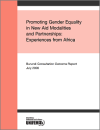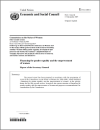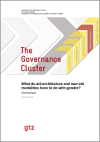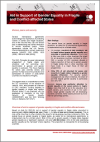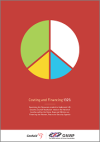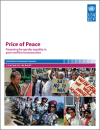FOUND 69
This paper provides a gender analysis of the new aid agenda as outlined in the Paris Declaration.
This report reflects country-level experiences shared at the Burundi regional consultation on Aid Effectiveness and Gender Equality in Africa in July 2006 consultation on the gender equality opportunities and challenges arising from aid reform processes.
The present report of the UN Secretary-General on Financing for gender equality and the empowerment of women, January 2008 has been prepared in accordance with the programme of work of the Commission on the Status of Women for 2007-2009, which identified Financing for gender equality and the em
This document prepared by the Working Party on Aid Effectiveness (WP-EFF) provides background information on the High Level Forum 4. It includes a description of the purpose, structure, substantive ;themes, preparation process and milestones.
This paper by Stephanie Seguino, University of Vermont Date in March 2009 argues that the economic and financial crisis provides an opportunity to rethink the role of government in the economy.
The purpose of this GTZ working paper is to provide guidance for the mainstreaming of a gender approach in new aid architecture and aid modalities. The author argues that gender equality is still not being adequately addressed or mainstreamed in current aid architecture and modalities.
The present study is a contribution to mark the 10th anniversary of the adoption of UNSCR 1325, and provides an overview of DAC members' funding targeted to gender equality in fragile and conflict-affected states.
Examining the resources needed to implement Security Council Resolution 1325 at national level as well as the gains, gaps and glitches of financing the women peace and security agenda. Over the last decade the policy environment on women, peace and security has gained significant momentum.
The main research question of this study To what extent do post-conflict reconstruction initiatives allocate resources to promote gender equality, address women's needs and involve women in decision-making around strategies and related resource allocations?

